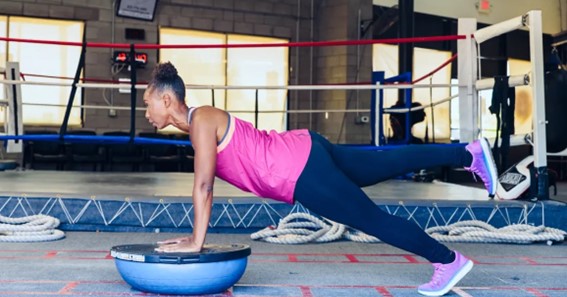Vestibular rehabilitation treatment is another name for balance therapy. Inner ear difficulties, or vestibular disorders, affect how you feel stable on your feet.
Dizziness, vertigo, gaze instability, falls, and imbalance are some of the most common symptoms of vestibular disorders, and they may be alleviated with balance treatment.
It’s also used for secondary conditions, including exhaustion, nausea, vomiting, and lack of focus that are associated with the primary illness.
Those dealing with these issues may find it difficult to carry out their daily activities, which may cause them to experience mental discomfort, despair, or worry.
Patients with vestibular problems are discouraged from engaging in physical activity for fear of making their condition worse.
It is difficult for those with balance issues to stand, walk, or even sit erect. Many persons over the age of 70 in the United States have been diagnosed with “abnormal balance,” suggesting that this is a common concern among the elderly.
Even if the gap between the sexes is narrow, older women are more likely than older males to have difficulties maintaining their balance. People aged 80 and over have a nearly 30% rise in the prevalence of balance issues.
Physical therapists assist those who are off-balance by creating unique exercise routines to boost their fitness and restore their sense of equilibrium.
Click here – Top 10 Payday Loans for Bad Credit
The Causes of Falls
More than 30% of people aged 65 and over and more than 50% of those aged 80 and over have a fall in any given year, making falls a prominent cause of injury among the elderly.
There are at least 300,000 older individuals in the United States who are hospitalized annually owing to a hip fracture, and it is estimated that one out of every five falls results in an injury such as a fractured bone or a brain injury.
Women sustain three-quarters of all hip fractures because they fall more often than men do. A fear of falling might cause a person to become less active and reduce their independence after experiencing a fall.
Slips and falls are prevalent in the bathroom, especially when getting up from the toilet or the shower or in the dark of night while getting out of bed.
Some of the things that might make someone more likely to fall are:
- Problems with balance or walking as a result of eyesight loss, vestibular dysfunction, changed foot feeling, or other medical disorders such as Parkinson’s, Multiple Sclerosis, Stroke, or Diabetes.
- Utilization of a Medicated Cocktail (those who take 5 or more medications).
- Dim lighting, loose rugs, and an otherwise disorganized home are all potential safety concerns.
- Hypotension caused by lying down (blood pressure that drops when standing)
- The problems that arise from improper footwear and improper foot care
- Leg muscle weakness
Physical therapy minimizes falls.
Patients may benefit from balance treatment by engaging in a variety of dynamic and stationary movements, responding to visual signals, using techniques that include coordinated movements, and completing dual tasks.
The sensation of vertigo associated with abrupt movements like bending, standing, walking, turning, and reaching subsides gradually. The therapy prepares patients for life after treatment by teaching them to walk safely on uneven terrain and in the dark.
Therefore, Media physical therapy reduces the likelihood of a fall by —
Click here – A battle between two luxury Mercedes vans
Controlling discomfort.
One of the first things that will be addressed in therapy is any discomfort that you are experiencing.
With the goal of making your physical therapy sessions as pain-free as possible, you and your therapist will focus on decreasing the intensity and frequency of painful movements before moving on to more strenuous ones.
Training for better equilibrium.
Improving one’s sense of equilibrium is crucial for avoiding tumbles since instability is a leading cause of accidental landings on one’s bottom.
As part of your therapy, your physical therapist will create a plan for you to improve your balance by doing things like standing on one leg or maintaining your equilibrium while doing something intellectually taxing.
Reduce Falling Fear.
Your physical therapist will help you restore your confidence in your balance, mobility, and ability to conduct everyday tasks by treating specific issues identified during your evaluation. Normal everyday activities will become more enjoyable as your balance and physical strength improve.
Gain Muscular strength.
Your physical therapist will instruct you in a regimen of exercises designed to restore or enhance your muscular strength.
Developing core strength by working on your trunk, hips, and stomach may do wonders for your sense of stability. Exercise bands provide a wide range of weight training options while reducing the impact on the joints.
Conclusion
One of the most essential things you can do to avoid falling is to maintain an active lifestyle. Staying on the path to autonomy requires awareness of potential slip and fall hazards and the adoption of protective measures.
Maintaining regular physical activity is a great way to improve your balance and lessen the risk of falls. Contact our balance therapy expert in Media, PA to learn how their physical therapists can help you improve your balance and avoid the risk of falling.
